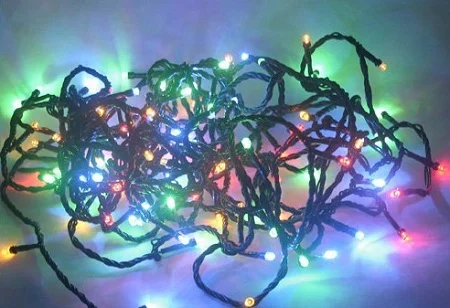Reds are the worst. They have eight times the amount of lead allowed under California law. But all of the light-emitting diodes (LEDs) tested by UC Irvine scientists were brimming with toxins – lead, arsenic and many other potentially hazardous substances – linked to cancer and other horrible diseases and maladies.
The scientists tested – crunched, leached and measured – Christmas strands, traffic lights and car headlights and brake lights. They reported their findings about the Christmas lights in the January 2011 issue of Environmental Science & Technology and plan to publish a more comprehensive paper at a later date.

Oladele Ogunseitan, chair of the university’s Department of Population Health & Disease Prevention, noted that breathing fumes from a single bulb won’t give a person cancer.
But any exposure increases the odds of developing disease, and most consumers are utterly unaware of any risks from LEDs, he said.
He recommended people use a special broom and wear gloves and a mask when cleaning up a broken bulb.
While there are rules about disposal of compact fluorescent bulbs, LEDs aren’t classified as toxic and can go into regular landfills.
What angers Ogunseitan is that LEDs weren’t tested before they were introduced and promoted as an alternative to inefficient incandescent bulbs – and, he said, manufacturers could easily make safer versions.
“Every day we don’t have a law that says you cannot replace an unsafe product with another unsafe product, we’re putting people’s lives at risk,” he said. “And it’s a preventable risk.”






